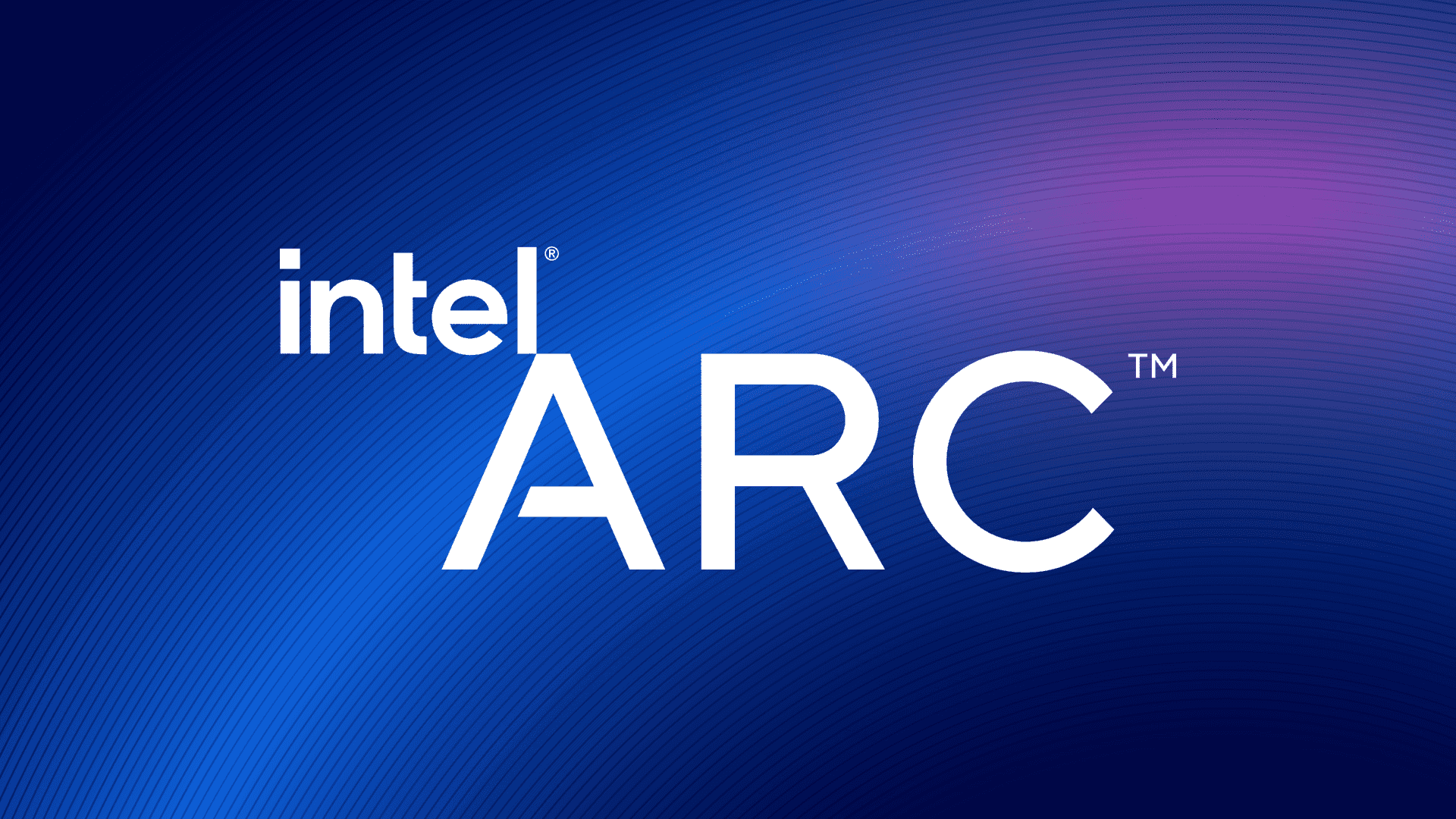The Intel Graphics Command Center is a user-friendly console designed specifically for Intel PCs with integrated graphics. This software provides an intuitive interface where users can adjust various graphics settings and receive personalized recommendations to enhance their visual experience. The Intel Graphics Command Center simplifies the process of optimizing graphics performance for games and media by providing visual guidance on how each setting impacts the user’s experience.
Many PC users wonder if this program needs to run at startup, but it’s actually optional. While the Graphics Command Center offers valuable tools for those who frequently play games or work with media, it doesn’t need to launch automatically with Windows. Users can find this application pre-installed on many systems with Intel graphics, or they can download it directly from the Microsoft Store if needed.
Frequently Asked Questions About Intel Graphics Command Center
What Is Intel Graphics Command Center?
Intel Graphics Command Center (IGCC) is a modernized control hub for Intel integrated graphics users, replacing the older Intel Graphics Control Panel. It offers a cleaner, more intuitive interface that allows you to fine-tune gaming, display, video, and power settings. Designed for gamers and casual users alike, the app supports integrated GPUs found in Intel Core processors and Iris Xe graphics, as well as Intel Arc discrete GPUs.
How Do I Access Intel Graphics Command Center?
If your PC is equipped with supported Intel graphics hardware, you can download the Intel Graphics Command Center directly from the Microsoft Store. Once installed, it can be opened like any other app. You can also right-click on your desktop and select “Intel Graphics Command Center” from the context menu if the software is already installed.
What Features Are Available?
The Command Center offers several key features:
- Display Settings: Adjust resolution, refresh rate, rotation, and scaling options. Supports multi-monitor setups.
- Video Settings: Tune visual enhancements like color correction, contrast, sharpness, and HDR.
- Game Optimization: Automatically detects supported games and allows you to adjust graphics settings such as texture quality, vertical sync, and anti-aliasing.
- Power Settings: Balance performance and battery life, especially useful for laptops.
- Capture: On supported hardware like Intel Arc, you can record gameplay and take screenshots.
Does Intel Graphics Command Center Work With Discrete GPUs?
Yes, IGCC supports both integrated graphics and Intel Arc discrete GPUs. If you’re using a system with an Intel Arc A-series GPU, the Command Center becomes a full-featured suite, including performance monitoring tools, capture features, and per-game optimization.
Can I Use IGCC for Overclocking?
Not directly. IGCC is primarily focused on tuning and monitoring. However, for Intel Arc users, there’s a “Performance” tab that includes some tuning capabilities like power limits, GPU clocks, and fan speed settings. For true overclocking support, Intel’s separate Arc Control software offers more advanced features.
Why Is My Game Not Detected in the Game Library?
IGCC uses a predefined list to auto-detect installed games. If your game isn’t listed, it may be because it’s not officially supported or installed in a non-standard directory. You can manually add a game by navigating to the Game section and using the “Add Game” feature to browse for the executable.
How Often Is IGCC Updated?
Intel rolls out regular updates to the Command Center via the Microsoft Store. These updates typically include bug fixes, new game profiles, feature improvements, and expanded hardware support. Users can also opt into beta updates through Intel’s support site if they want early access to new features.
Can I Use IGCC Alongside Third-Party Tools?
Yes. IGCC is compatible with most third-party monitoring and tuning tools, such as MSI Afterburner or OBS for streaming. However, some settings may overlap, so it’s best to make adjustments in one tool to avoid conflicts.
Is Intel Graphics Command Center Safe to Use?
Absolutely. It’s an official Intel app, digitally signed and distributed through Microsoft’s official store. It doesn’t include ads, bloatware, or any hidden software. It’s lightweight and designed to run quietly in the background when not actively being used.
How Do I Reset All Settings?
You can reset settings for individual sections within the app. For example, under the Display or Video tab, look for the “Restore Defaults” button. If you want a full reset, uninstalling and reinstalling the app from the Microsoft Store will return everything to factory defaults.
Who Should Use Intel Graphics Command Center?
Whether you’re a gamer looking to optimize performance on your Intel-powered laptop, a content creator adjusting display color accuracy, or just someone who wants to tweak your resolution or refresh rate, IGCC is a user-friendly tool that offers powerful control without overwhelming complexity. It bridges the gap between casual and advanced users, making Intel graphics hardware more flexible and capable.
Key Takeaways
- Intel Graphics Command Center provides an intuitive interface for optimizing graphics settings with visual explanations of each feature’s impact.
- The program is optional at startup and can be manually installed from the Microsoft Store if not automatically included with graphics drivers.
- Users can receive personalized recommendations for graphics configurations that enhance both gaming and media experiences.
Overview of Intel Graphics Command Center
The Intel Graphics Command Center is a modern software application designed to help users manage and optimize their Intel graphics hardware. It replaces older graphics control panels with a more intuitive interface while providing enhanced functionality for gaming and general display management.
Core Features
The Intel Graphics Command Center offers a streamlined user interface with easy-to-navigate menus and graphical elements. Users can access various settings through Windows-style icons and buttons that make adjustments more intuitive than previous Intel graphics software.
One of the standout features is the One-Click Optimization tool that automatically adjusts game settings for optimal performance. This saves users from manually tweaking complex graphics options.
The application provides detailed control over:
- Display settings (resolution, refresh rate, scaling)
- Color profiles and calibration
- Power management options
- 3D rendering settings
Users can create custom profiles for different applications, ensuring each program runs with ideal graphics settings. The Command Center also includes built-in game support with specific optimization options for popular titles.
Compatibility and Requirements
Intel Graphics Command Center is designed for systems with Intel integrated graphics hardware, particularly newer generations. It supports Intel UHD Graphics, Iris Plus Graphics, and newer discrete Intel Arc GPUs.
The software requires:
- Windows 10 or newer operating system
- Compatible Intel graphics hardware (typically 6th generation Intel processors or newer)
- At least 4GB of system RAM
- Minimum of 1GB of free storage space
Not all features are available on older hardware. The most advanced optimization tools work best with 8th generation Intel processors and newer.
Users can download the latest version directly from Intel.com or through the Microsoft Store. Regular updates provide bug fixes, new features, and expanded game support.
Installation and Setup
Installing Intel Graphics Command Center is straightforward and gives users access to graphics configuration options and optimizations for their Intel-powered PCs. The process varies slightly depending on your preferred installation method and Windows version.
Downloading from Microsoft Store
The simplest way to install Intel Graphics Command Center is through the Microsoft Store. This method ensures you get the official Universal Windows Platform (UWP) version of the application.
- Open the Microsoft Store app on your Windows 10 or Windows 11 device.
- Search for “Intel Graphics Command Center” in the search bar.
- Click on the Intel Graphics Command Center application in the search results.
- Press the “Get” or “Install” button to begin the download.
The application requires you to be signed in to your Microsoft account. Once installed, you can use the app on up to ten Windows devices linked to your account.
Step-by-Step Installation Instructions
If you prefer to install the Intel Graphics Command Center using the driver package from Intel’s website, follow these steps:
- Visit the official Intel website and navigate to the Drivers & Downloads section.
- Select your specific Intel graphics hardware or use the automatic detection tool.
- Download the latest graphics driver package that includes the Command Center.
- Once downloaded, run the installation file (typically with a .exe extension).
- Select “Clean Install” if you want to remove previous driver versions.
- Follow the on-screen instructions to complete the installation.
The installer will set up both the graphics drivers and the Intel Graphics Command Center application on your system.
First-Time Configuration
When you first launch Intel Graphics Command Center, you’ll need to configure some initial settings to optimize your experience.
The application will automatically detect your Intel graphics hardware and display relevant configuration options. You may see a welcome screen with basic information about the features available for your specific hardware.
Navigate through the different sections to customize your graphics settings:
- Display: Adjust resolution, refresh rate, and scaling options
- Video: Configure color settings and video enhancement features
- System: View hardware information and check for updates
- Support: Access troubleshooting tools and help resources
You can also create custom profiles for different applications and games to optimize performance based on your specific needs.
Customizing Graphics Settings
The Intel Graphics Command Center offers several options to tailor graphics performance to your specific needs. Users can adjust visual quality, optimize gaming settings, and configure multiple display setups through the intuitive interface.
Adjusting Color Settings
Color settings in the Intel Graphics Command Center allow users to fine-tune their display’s visual output. To access these settings, navigate to the Display section and select the Color tab.
From here, you can adjust brightness, contrast, hue, and saturation to match your preferences. The Command Center also offers preset color profiles like Cool, Warm, and Native that can be selected with a single click.
For more precise control, the custom option lets you modify individual RGB values. Some users report that downloading older versions of the Command Center from manufacturer websites (like Dell) provides access to additional color adjustment features that might be missing in newer Microsoft Store versions.
Optimizing for Gaming Experience
Intel Graphics Command Center provides several options to enhance gaming performance. In the System section, you can prioritize performance over quality to boost FPS (frames per second).
Key settings to adjust include:
- Anisotropic Filtering: Improves texture quality at angles
- Tessellation: Controls the level of 3D model detail
- Anti-Aliasing: Reduces jagged edges on objects
To maximize gaming performance:
- Set power mode to “Maximum Performance”
- Disable unnecessary visual effects
- Update drivers regularly through the Command Center
Many games benefit from custom optimization profiles available within the application, which automatically adjust settings for specific titles.
Managing Multiple Displays
The Command Center makes handling multiple monitors straightforward. Users can control display arrangement, resolution, and refresh rates for each connected screen.
To adjust overscan issues, open Display > General and select “Custom” under the scaling options. This allows you to fine-tune how content fits on your screen.
For setting custom resolutions, newer versions have some limitations on internal displays due to hardware constraints. However, you can still:
- Arrange displays by dragging their icons
- Set different refresh rates for each monitor
- Configure extended or mirrored display modes
When connecting displays with different resolutions, the Command Center allows you to set independent scaling for each monitor, helping maintain proper proportions across all screens.
Support and Maintenance
Intel Graphics Command Center requires regular upkeep to ensure optimal performance. Proper maintenance includes keeping drivers updated and knowing how to solve common problems that may arise.
Updating Graphics Drivers
Intel regularly releases new graphics drivers that improve performance, fix bugs, and add support for new games and applications. Users can update their drivers through several methods:
Intel Graphics Command Center – The app includes a built-in update checker that notifies users when new drivers are available.
Intel’s Website – Visit the Intel Driver & Support Assistant page to download the latest graphics drivers.
Windows Update – Microsoft occasionally distributes Intel graphics drivers through Windows Update.
It’s recommended to check for updates at least once a month. Before installing new drivers, users should create a system restore point in case the update causes stability issues.
Driver updates often include critical security patches that protect systems from vulnerabilities. Intel recently notified HP about a potential security vulnerability in some Intel Graphics Command Center Service software packages.
Troubleshooting and Managing Issues
When experiencing problems with the Intel Graphics Command Center or graphics performance, users can try several troubleshooting steps:
Restart the application – Close and reopen the Intel Graphics Command Center if it becomes unresponsive.
Disable startup task – The Intel Graphics Command Center startup task is not necessary for Windows startup. Disabling it may improve boot time without affecting functionality.
Reset graphics settings – Return to default settings if custom configurations cause display issues.
For persistent problems, the Intel Graphics Control Panel offers diagnostic tools to identify hardware issues. Users can access detailed product information and specifications through the app’s information section.
Intel provides community forums where users can seek help from other users and Intel support staff. The forums contain solutions to common problems and workarounds for known issues.
Frequently Asked Questions
Intel Graphics Command Center raises many common questions among users. The following answers address installation requirements, compatibility issues, and key functions to help users make the most of this graphics management tool.
How can one install Intel Graphics Command Center on Windows 10?
Users can install Intel Graphics Command Center on Windows 10 through the Microsoft Store. The system must be running Windows 10 version 1709 or higher.
The computer also needs to have 6th Gen Intel Core processors or newer for compatibility. After opening the Microsoft Store, users can search for “Intel Graphics Command Center” and click the Install button.
Is it possible to use Intel Graphics Command Center on Windows 11?
Yes, Intel Graphics Command Center works on Windows 11. The software is compatible with the newer operating system and maintains the same functionality.
Users can install it through the Microsoft Store on Windows 11 just as they would on Windows 10. The same hardware requirements apply, needing 6th Gen Intel Core processors or newer.
What are the differences between Intel Graphics Command Center and Arc Control?
Intel Graphics Command Center is designed for integrated Intel graphics and older discrete GPUs. It offers basic settings for display, video, and system configuration.
Arc Control is specifically developed for Intel’s newer Arc discrete graphics cards. It provides more advanced features, performance monitoring, and driver updates tailored for gaming and content creation on dedicated graphics hardware.
Can Intel Graphics Command Center be downloaded without accessing the Microsoft Store?
While the Microsoft Store is the primary distribution channel, Intel sometimes offers direct download links on their support website. These alternative download options may be available through Intel’s driver update utility.
Users should be cautious about downloading from third-party websites to avoid security risks. The Microsoft Store version ensures the application is verified and secure.
Is Intel Graphics Command Center necessary for managing graphics settings?
No, Intel Graphics Command Center is not necessary for basic computer operation. Windows has built-in display settings that can handle fundamental adjustments.
However, the Command Center offers more detailed controls for Intel graphics, including color profiles, display scaling, and power settings. Advanced users may find these additional options valuable for optimizing their visual experience.
How to uninstall Intel Graphics Command Center if needed?
Users can uninstall Intel Graphics Command Center through Windows Settings. They should navigate to Apps > Apps & features, search for Intel Graphics Command Center, select it, and click Uninstall.
If installed through the Microsoft Store, users can also right-click the app in the Start menu and select Uninstall. The process removes the application without affecting graphics drivers or system performance.







